Saturnia, a hot spring located in the untamed Maremma region of Tuscany, is arguably the most famous in the entire country of Italy. Beautiful natural features like wooded hills, wheat fields, valleys, vineyards, and olive trees surround the village and the springs. Saturnia is not far from Pitigliano, a tiny town perched atop a tuff rock. Scansano, a region well-known for its Morellino red wine, is also close by.
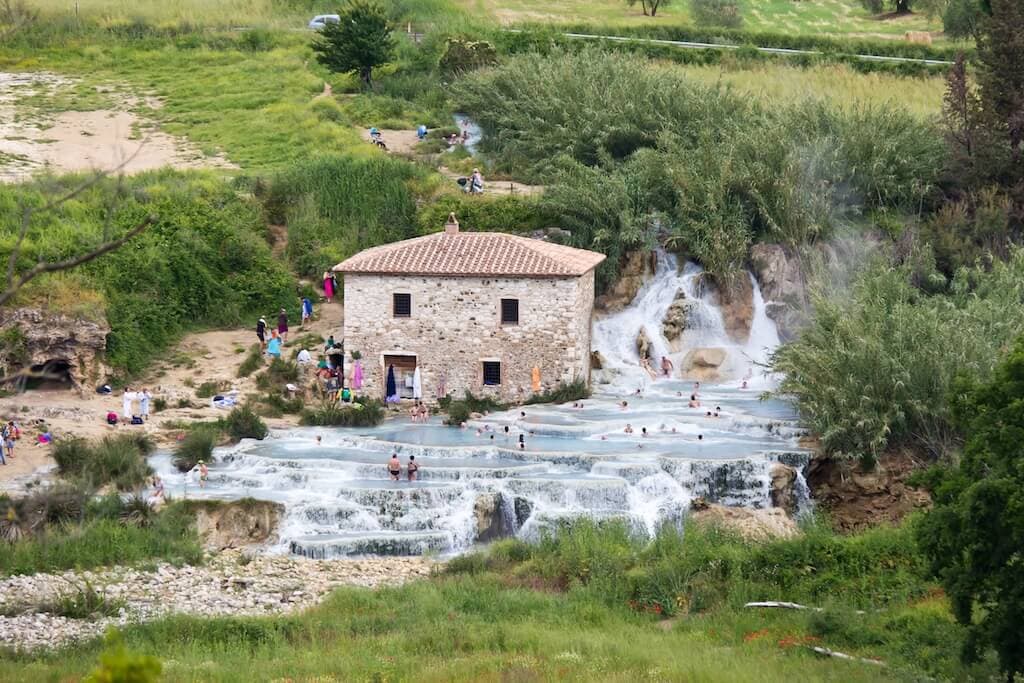
Saturnia and Cascate del Mulino thermal bathsYou reach the hot springs close to a long-gone mill as you continue along the winding trail. It also goes by the names Mill Falls and Cascate del Mulino as a result. Despite the overwhelming smell of rotting eggs all around you, you can’t miss them.
It’s the only thing in the water that smells sulfurous, so don’t freak out. When water bursts out of the earth at a temperature of 37°C (98°F), a little valley is created. Little pools were created after years of the white water moulding the land. According to legend, a lightning strike is where Saturnia’s hot springs first appeared.

Tuscany’s Petriolo Hot SpringsThe Petriolo Hot Springs are located close to the Grosseto and Siena provincial line, around 40 minutes south of Siena. Since the time of the ancient Romans, they have gained in popularity. In actuality, one can still see the walls of an old Roman thermal bath. One of the first hot springs in Tuscany, Petriolo may have been used to soothe arthritis, treat colds, and polish skin.
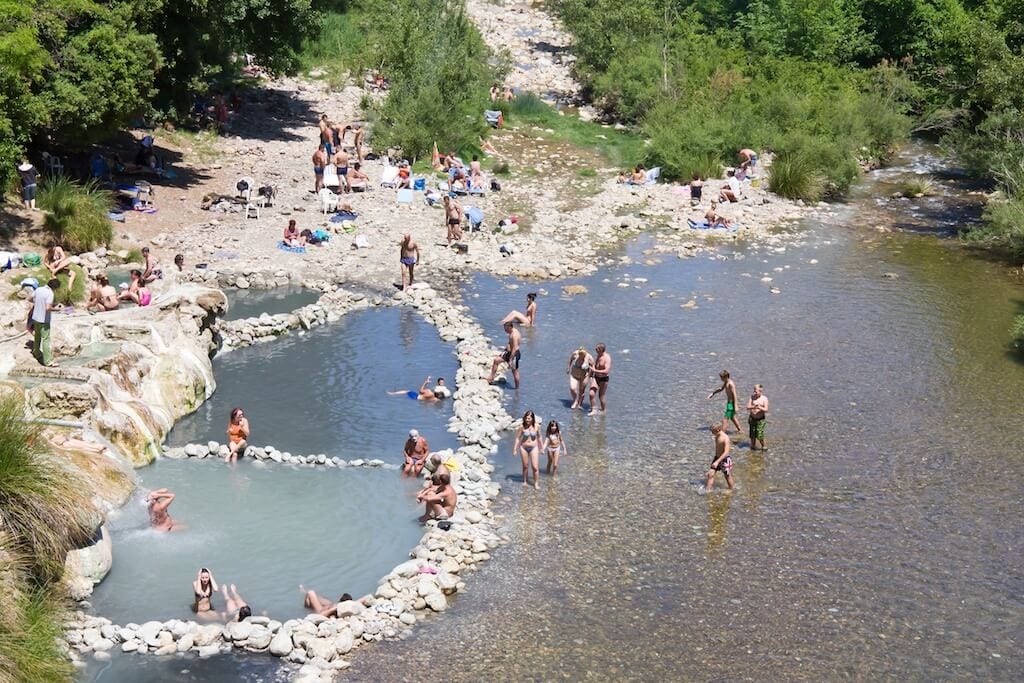
Hot Springs of PetrioloAt a temperature of 43°C/109°F, the hot waters explode from the ground, filling small baths and a larger pool. Along the riverbanks, there is a lot of clay that can be collected and smoothed. Your skin will be softer and smoother if you go swimming to wash off the dirt after a short period of time.
San Filippo Bagni At the base of Mount Amiata, Bagni San Filippo is ringed by the magnificent Val d’Orcia hills. The previous Filippo Benizi, who escaped to this area in the 13th century after being nominated to be the new Pope, is the source of the town’s name.

These free hot springs go by the name of Fosso Bianco. A short slope will take you to a number of little pools in the center of the forest. The water is 40°C (104°F) and is enriched with calcium, sulfur, sulfur bicarbonate, and magnesium. The considerable limestone formation is what makes Bagni San Filippo hot springs unique.
Due to its distinctive shape and striking white tint, it resembles a white enormous whale.

Starting with Lorenzo the Magnificent in 1485 and continuing with Grand Duke Ferdinando II, who came here in 1635 to relieve a chronic headache, the House of Medici frequently visited thermal baths throughout the Grand Duchy of Tuscany.
The Vecchio Bagno Have you ever visualized a tiny town where the town square has been replaced by a massive rectangular pool? Bagno Vignoni, one of Tuscany’s most characteristic hot springs, is located in the Val d’Orcia and has a population of just 30 people.
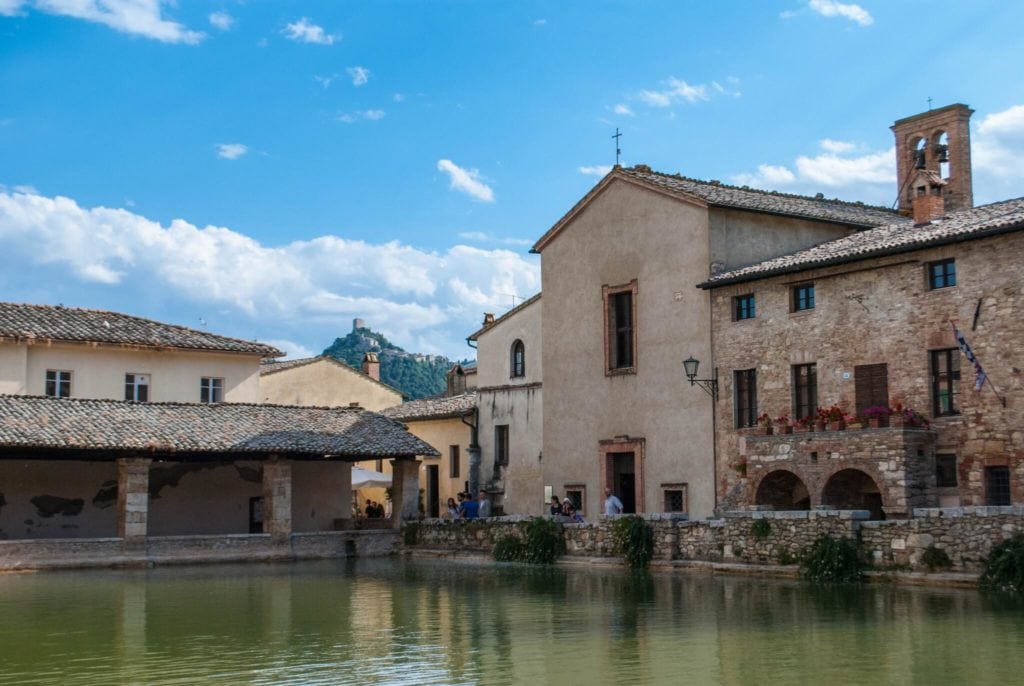
Piazza delle Sorgenti, a recognizable plaza, is one of its most well-known features. The enormous central tank, which is intended to store the hot water that gushes from the volcanic ground, surrounds every residence. At one of the tables outdoors, you can visit the modest church and enjoy lunch or sip coffee.
The Via Francigena, a major pilgrimage path, passes in Bagno Vignoni. The Romans were the first to learn about hot springs and make use of their healing and unwinding properties. Later, this is where the Medici Family spent their vacations and unwinded. The tiny free springs located at the start of the route leading up to the center. There is nothing but the natural world around you.

The sulfuric water, which is roughly 50°C/122°F, is brought to this location by small, natural channels and cascades. Bagni San CascianoSan Casciano, near Siena, is another free hot spring in Tuscany where you may relax. You may relax in the authentic, stone-built swimming pools from the Roman era at the foot of Mount Cetona, not far from the Umbria area border.
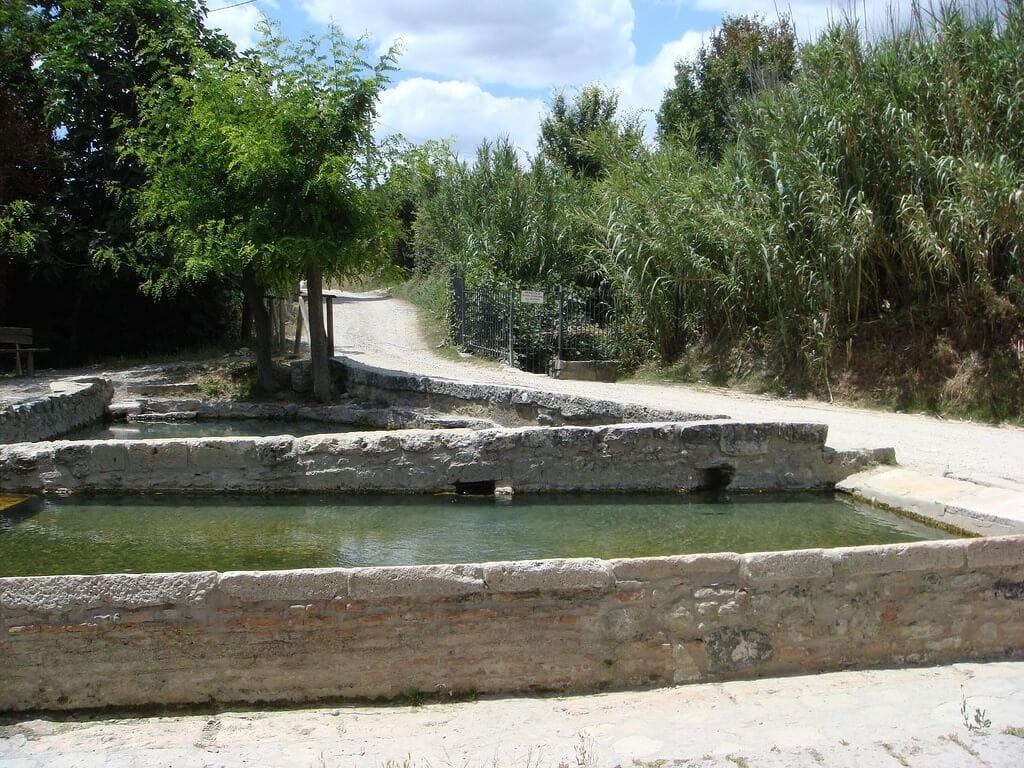
Bagni San Casciano Hot springs available for free – Leigh Rowan At 40°C / 104°F, the water is abundant in calcium, fluoride, and magnesium. Due of this, San Casciano is a well-liked holiday spot, particularly during Tuscany’s fall break. In the summer, feel free to have a picnic and some downtime in the roomy garden that surrounds the pool.Period EquiThe tiny community of Equi Terme is located in Lunigiana, hidden among the imposing Apuan Alps. The medicinal benefits of these hot springs in Tuscany, which date to the Roman era, are widely recognized.
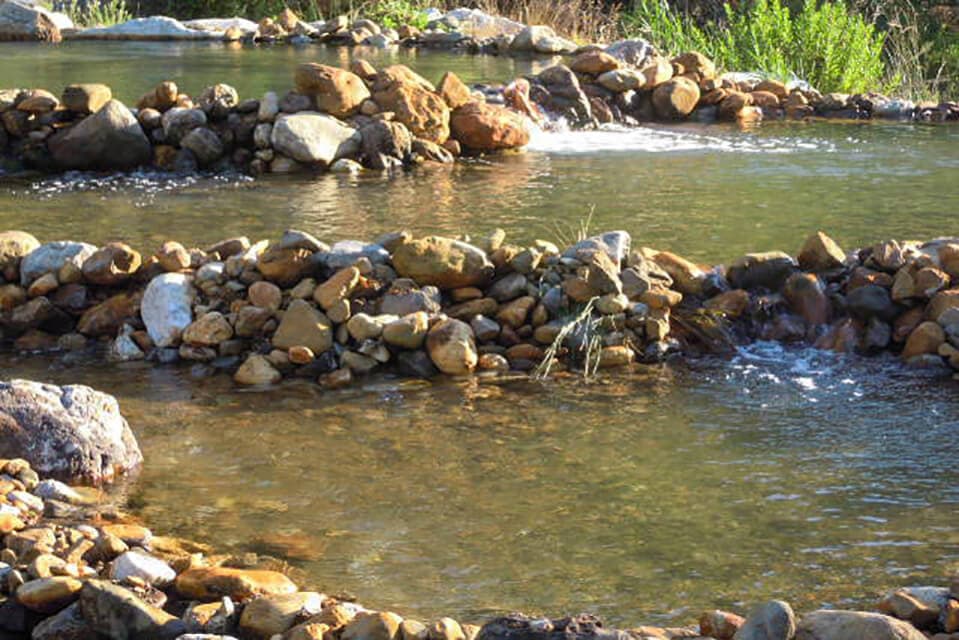
Because it is truly off the main road, you should include Equi Terme, a Tuscany resort that is very well-liked by locals, in your itinerary. A trip to the neighboring grotto and the archaeological park can also be added.
There are castles all across Lunigiana, therefore I advise visiting one of them. Any of Tuscany’s hot springs is the ideal place to spend a tranquil day with loved ones. Rejuvenate your body and mind as well.

They also work well as a treatment for rheumatoid arthritis, neuralgia, and arthritis. How to Take Advantage of the Natural Hot Springs in TuscanyPack a lunchbox because this advice is applicable to all of Tuscany’s hot springs.
You’ll be really hungry after a thermal bath, but not all locations are close to restaurants where you can get a meal or a traditional Tuscan Merenda. These locations quickly get full on the weekends or during busy times.
So, if you want to find a decent place, I suggest arriving there early in the morning. And perhaps depart at peak hour, which is lunchtime. Stay tuned if you want to learn more about Tuscany’s spa facilities and you still want to experience its hot springs. We’ll discuss about incredible thermal baths soon. To store it for later, use a pin.
